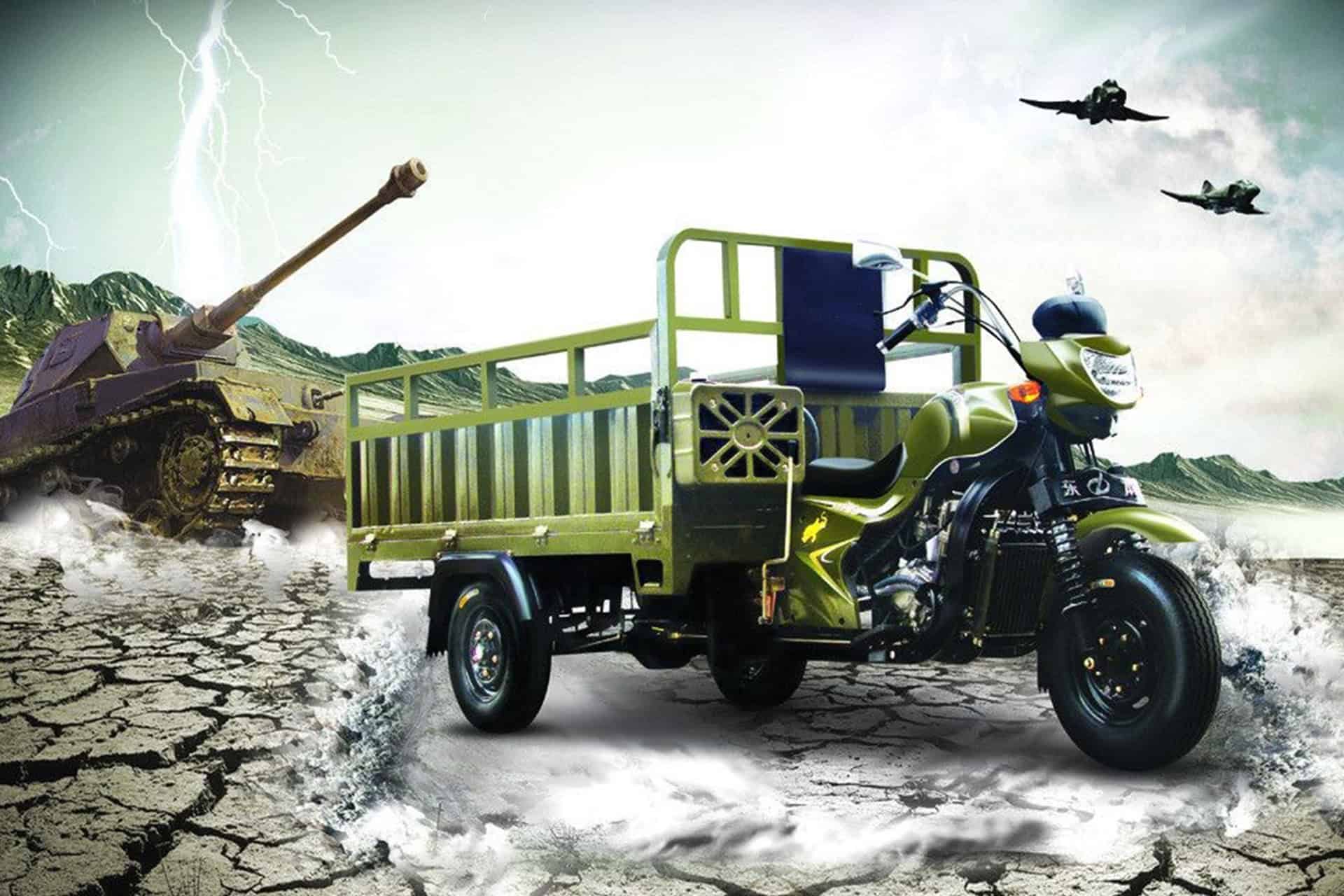Fuel-powered tricycles are robust, versatile vehicles prized for cargo, passenger, and utility applications. Yet like any internal-combustion machine, they can experience a range of faults—from hard starting and fuel-supply hiccups to compression loss and wear-related issues. This article provides a comprehensive, step-by-step guide to diagnosing and resolving the most common faults, and outlines best practices for preventive maintenance. By following these recommendations, operators can ensure reliable performance, lower operating costs, and longer service life for their tricycles.
Starting Difficulties
Causes of Hard Starting
• Operator Technique: Excessive throttle or premature fueling floods the combustion chamber, lowering temperature and delaying ignition.
• Cold Conditions: Low ambient temperatures increase oil viscosity and cool the engine block, making cranking harder.
• Oil Viscosity & Lubrication: Thick engine oil or insufficient pre-lubrication increases internal friction.
• Repeated Failed Attempts: Multiple unsuccessful starts can deplete battery voltage and flood the engine.
Troubleshooting & Solutions
• Proper Crank-Through: Before starting, manually rotate the crankshaft 20 – 200 turns (depending on idling time or recent rebuild) to distribute oil to bearings and piston skirts.
• Throttle Control: Limit initial fuel injection to about two-thirds of rated flow. Engage the starter only after the flywheel reaches high rpm and within 1–2 seconds before the decompressor closes.
• Seasonal Oil Selection: In winter, use premium low-viscosity oils with friction reducers to improve cold-start flow and reduce wear.
• Engine Preheat: Maintain or restore glow-plug or hot-bulb preheating systems. In extreme cold, supplement with block heaters or warm-oil additives.
Fuel and Air Supply System Faults
Fuel Supply Issues
• Air/Water in Fuel Lines: Introduce air pockets or water (condensation), blocking flow.
• Fuel Pump Wear: Cam or internal components worn, delaying injection timing.
• Injector & Valve Wear: Leaks or poor spray patterns reduce fuel-air mixing.
• Filter & Tank Contamination: Blocked valves, clogged filters, or low-grade fuel increase start and performance problems.
Air Supply Issues
• Clogged Air Filter: Restricts airflow and increases intake vacuum.
• Valve Clearance Errors: Improper gaps or worn valves leak, reducing volumetric efficiency.
• Intake/Exhaust Blockages: Debris in the manifolds or muffler can choke flow.
Remedies
• Bleed & Clean Lines: Purge fuel lines of air and water; replace worn hoses and clamps.
• Pump & Injector Service: Rebuild or replace high-pressure pump cam/lobes; clean or replace injectors and nozzles.
• Filter Maintenance: Use OEM-grade filters; replace at scheduled intervals.
• Air Intake Care: Clean or replace filters; adjust valve clearances per spec; inspect ducting for obstructions.
Combustion Chamber & Compression Failures
Symptoms of Low Compression
• Difficulty cranking and lack of power.
• Excessive white or bluish smoke at startup.
• Poor fuel economy and sluggish throttle response.
Underlying Causes
• Valve Leaks: Seat recession over 2.5 mm or burnt valves drop compression.
• Piston/Cylinder Wear: Excessive ring or skirt clearance allows blow-by.
• Connecting Rod Play: Oversized rod-bearing clearance lowers peak pressure.
• Head Gasket Leaks: Leaks at the cylinder head gasket seat pressure.
• Carbon Buildup: Reduces chamber volume and disrupts air motion.
• Broken Valve Springs: Lose tension and allow valve drop.
Repair Strategies
• Leak‐Down Test: Measure cylinder pressure; isolate leaks to valves, rings, or gasket.
• Valve Refacing & Seat Machining: Restore proper sealing; set clearances.
• Piston/Ring Replacement: Re-hone cylinders; fit new rings and check skirt clearances.
• Rod & Bearing Inspection: Replace worn bearings; correct clearances to spec.
• Gasket & Carbon Removal: Use quality head gaskets; decarbonize chambers with appropriate cleaners.
• Spring Replacement: Install OEM-grade valve springs with correct rates.
Preventive Maintenance Best Practices
Regular Servicing
• Oil & Filter Changes: Every 1,000 – 2,000 km or per manufacturer.
• Fuel & Air Filter Replacement: At least annually or as environmental conditions dictate.
• Valve Adjustment: Check clearances every 5,000 km.
• Battery & Electrical: Ensure charging system health; clean terminals and wiring harness regularly.
Seasonal Preparations
• Cold-Weather Protocols: Install block heaters; switch to winter-grade oils; verify preheat system operation.
• Heat & Dust Protection: Use high-temperature-rated oils and heavy-duty filters in harsh conditions.
Operator Training
• Start/Stop Procedures: Teach correct throttle, decompression, and kill-switch timing.
• Daily Checks: Visual inspection of belts, hoses, fluid levels, and chassis integrity.
• Load Management: Avoid overloading; distribute cargo evenly to prevent chassis stress.
By understanding the common failure modes—starting difficulties, supply-system faults, and compression losses—and implementing the recommended diagnostic and preventive measures, three-wheeler operators can achieve safer, more efficient, and longer-lasting performance. Regular maintenance, proper seasonal handling, and operator training are the keys to minimizing downtime and maintenance costs, ensuring that your fuel-powered three-wheeler remains a reliable workhorse in any environment.

